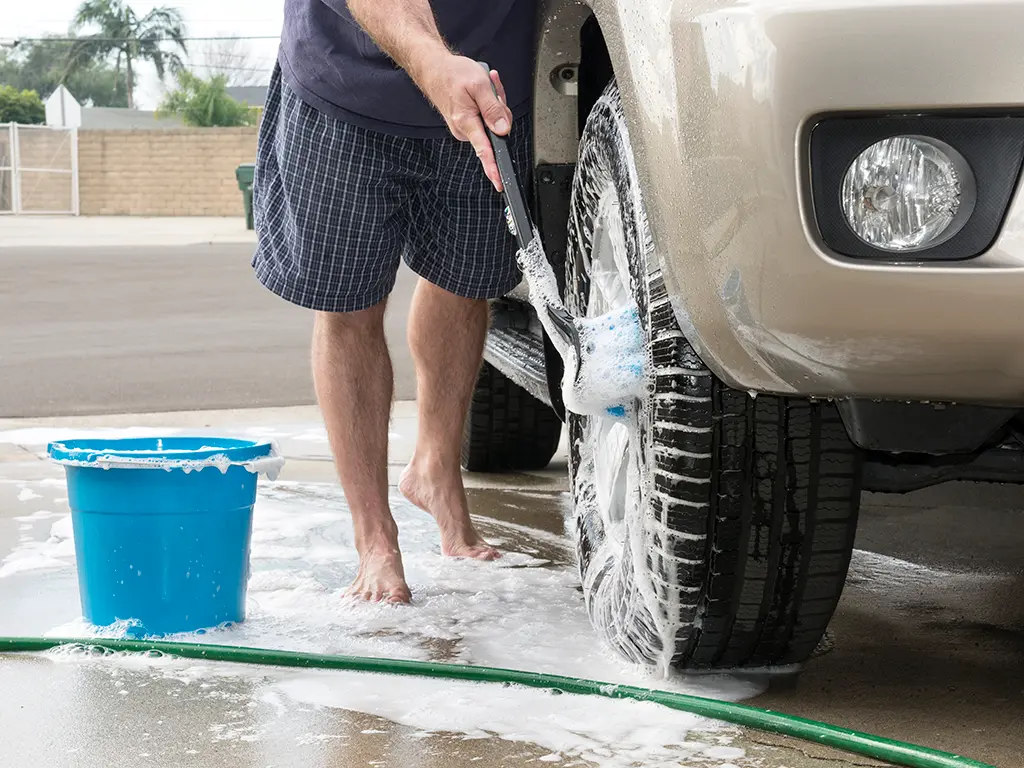Tyre Care
Frequently cleaning your tyres can help to prolong their life and keep you safe on the road. Careful cleaning can enhance your braking performance, handling abilities and traction and it also gives you an opportunity to visually inspect your tyres for any signs of damage.
Cleaning Your Tyres
Cleaning your tyres is a simple task which can be undertaken easily at home. You should invest in the right equipment which includes a soft bristled brush, such as a paintbrush, the correct tyre and wheel cleaning solution for your vehicle and a microfiber cloth.
Make sure that you clean your tyres before the rest of your vehicle so as to avoid spreading the grime and dirt from your tyres to the paintwork. When cleaning your tyres you should pay attention to your wheels as often dust from the brake pads breaks off and settles here, which can lead to corrosion or even surface pitting.
After you scrub and rinse off your wheels and tyres, you should ensure that you dry your wheels off to avoid rusting.
Visually Inspect Your Tyres
Cleaning your tyres provides a good opportunity for you to visually inspect your tyres and identify forms of tyre damage.
You should remove any debris such as stones and grit from the tyre if found, however, if anything is lodged in to the tyre tread you will need to contact a tyre specialist for guidance.
Repairing Your Tyres
Whilst you are cleaning your tyres you may find damage and decide to repair your damaged tyre. Undertaking tyre repairs is not as straightforward as it seems and there is often underlying damage to the tyre structure which you may not even notice. You should always consult a tyre specialist before attempting any repairs.
Replacing Your Tyres
Tyres do not have a standard lifespan, as this can depend upon many different factors. You will need to replace your tyres when:
- Tyre tread depth is lower than the legal limit of 1.6mm. You can find this out by checking your tyre tread
- If you can see your tread wear indicators which also means you have insufficient tread depth
- You find any signs of tyre damage which cannot be repaired by a specialist
- You have suffered a puncture or tyre blowout
- Your tyres have aged and are cracked or brittle
If you do need to replace your tyres it is important that you ensure that your new tyre matches the other tyres on your vehicle. Whilst it is not always possible to replace the tyre with the exact same tyre, you should ensure that its tread design, speed rating and construction match all the other tyres on your vehicle.
After you replace your tyres you should allow for a ‘running-in’ period where you drive on dry roads at medium speeds for the first 100-200 miles to help the tyre to reach its intended level of performance and ultimately prolong tyre life.
If you have further questions regarding caring for your tyres, contact your local PTA Garage Services centre where our trained specialists will be able to provide further guidance.


